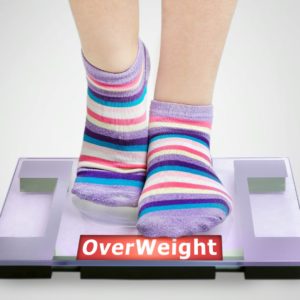 There are health risks of physical inactivity that can take away the quality of a person’s life. We are becoming more and more technologically advanced and as a result, we are less active.
There are health risks of physical inactivity that can take away the quality of a person’s life. We are becoming more and more technologically advanced and as a result, we are less active.
We are turning more and more into couch potatoes! In fact, being inactive is increasing on a global scale due to the amount of sitting we do each day on our devices.
These studies are still emerging when it comes to the risks of a sedentary lifestyle. Yet, there is plenty of data that warns of the health risks and diseases caused by being inactive.
Here is a list of the top ten health risks of physical inactivity:
What is a Sedentary Lifestyle?
James A. Levine, an obesity specialist at the Mayo Clinic, is the first one to coin the phrase ‘sitting disease. His 2005 article in Science Magazine centered on the negative health risks of physical inactivity.
 Little did he know how important his theory would become. Neither did anyone realize the extent of ruin it can unleash on our bodies.
Little did he know how important his theory would become. Neither did anyone realize the extent of ruin it can unleash on our bodies.
Those living a sedentary lifestyle aren’t meeting the national physical activity guidelines. These guidelines state that adults should get no less than 150 minutes (or 2.5 hours) of physical activity each week.
While this may seem easy to accomplish, it seems that only 21% of adults are meeting these guidelines.
Since we are creatures of habits, our extended periods of inactivity can cause serious health risks.
10 Health Risks of Physical Inactivity
The American Heart Association has recorded an 80% increase in sedentary jobs since the 1950s. Not only that, but our commutes are longer. So that by the end of the day, we come home so tired we need to sit some more.
All this sitting is taking a toll on our health. It is increasing our risk for developing serious diseases as the ten that are mentioned below.
Weight Gain
 No surprise here! The most obvious health risk of extended periods of sitting is that you burn fewer calories.
No surprise here! The most obvious health risk of extended periods of sitting is that you burn fewer calories.
Plus, your metabolism slows down because you are not moving as much so you don’t need as much energy.
When metabolism is affected, the result is that your body can’t break down fats and sugars for energy.
So, what your body used to burn for energy is now being stored away as fat. Even if you’re not eating processed, or fried foods, you’ll still gain weight.
In the long run, this can lead to obesity, which is the second leading cause of preventable deaths in the US.
Back and Neck Pain
 When you’re not moving, your blood flow doesn’t move as freely. This means your muscles aren’t getting as much oxygen as they need.
When you’re not moving, your blood flow doesn’t move as freely. This means your muscles aren’t getting as much oxygen as they need.
As a result, they tighten up, then become stiff and painful.
You can especially feel this in your lower back and neck. Yet, it affects different muscles in different ways.
Your glutes (butt muscles) and abs (abdominal muscles), for example, become weaker.
Cardiovascular Diseases
With less activity comes poor blood circulation. This weakens the immune system and causes a hormonal imbalance.
It can also result in high blood pressure and elevated cholesterol levels.
Anyone who walks less than 1,000 steps a day is at a higher risk for cardiovascular diseases.
Combine that with sitting for more than eight hours a day, and you have about a 147% more chance of developing heart disease.
Type-2 Diabetes
 The more time you spend sitting down, the higher the risk of developing type-2 diabetes.
The more time you spend sitting down, the higher the risk of developing type-2 diabetes.
As a matter of fact, those who lead sedentary lives have a 112% increased risk of developing this chronic disease.
Without enough physical activity, your body becomes resistant to insulin.
When your body can’t release insulin when it’s most needed, this leads to type-2 diabetes.
Metabolic Syndrome
Metabolic syndrome is when you suffer from three or more health risk factors. The less physical activity you do, the higher your risk is for metabolic syndrome.
The most important risk factors for metabolic syndrome include the following:
- A large waistline (35 inches or more for women, 40 inches or more for men)
- High blood pressure (130/85 mmHg or higher)
- High fasting blood sugar levels (100 mg/dL or higher)
- Low HDL levels (less than 50 mg/dL for women and 40 mg/dL for men)
- High triglyceride levels (the bad cholesterol: 150 mg/dL or higher)
Osteoporosis
 This health risk isn’t one of the obvious ones when it comes to sedentary behavior.
This health risk isn’t one of the obvious ones when it comes to sedentary behavior.
Yet, physical inactivity weakens your bones and may lead to osteoporosis.
Another reason why osteoporosis is a result of a sedentary lifestyle is the lack of sunlight.
Less sunlight means less vitamin D, which has a negative impact on the strength of your bones.
Muscle Degeneration
That saying ‘If you don’t use it, you lose it’ is completely true when it comes to muscles.
When you don’t use your muscles, they become weaker and you lose muscle strength.
Did you know that we lose from 3% to 5% of our muscle mass starting at the ripe old age of 30?
Mix that with sedentary behavior, and you’ll only make it worse.
Mental Health
 Lack of physical activity results in a higher risk of developing mental health disorders, such as depression.
Lack of physical activity results in a higher risk of developing mental health disorders, such as depression.
This is because exercise, even low-impact workouts, boosts blood flow.
It also signals your brain to release ‘feel-good’ hormones that fight off stress and anxiety.
Cancer
Lack of physical activity has been linked to an increased risk of certain types of cancer.
This includes colon, uterine, and breast cancer.
With excess weight and increased inflammations, the body’s defense mechanisms become weaker.
Thus, abnormal cells find it easier to develop and infiltrate healthy tissue.
Mortality
 Leading a sedentary lifestyle increases your risk of premature death.
Leading a sedentary lifestyle increases your risk of premature death.
The World Health Organization (WHO) states that an average of 85% of the global population isn’t getting enough physical exercise.
As a result, sedentary behavior is the fourth leading risk factor for mortality in the world.
Ways to Combat Physical Inactivity
The good news is that all these health risks can be reversed. All you have to do is start forming good habits.
Begin with a few simple changes to your day. Soon, you’ll be getting in those 150 minutes of physical activity each week, if not more.
Here are a few good habits to try out today:
- Park further away from entryways
- Take the stairs instead of the elevator
- Stand or walk around every 30 minutes for no less than 10 to 15 minutes at a time
- Walk while talking on the phone
- Stretch and exercise daily, even for a minimum of 15 minutes
- Use sit/stand desks in your workplace
- Keep moving while watching TV
- Do more housework, yard work, or gardening
Why Sitting Is Bad For You Video:
The good news is that it doesn’t take a lot of movement on a daily basis to improve your health and create the best life.
Only one thousand to three thousand steps a day is considered typical in a sedentary lifestyle. However, three thousand to ten thousand steps are considered light active exercise.
All the movement doesn’t have to be done all at once. You can spread it out over the day.
You can go for a walk around the neighborhood, walk to the corner store or park a little further away from the door if you drive to a store.
Once you start moving more, you will notice the benefits to your physical and mental health.






